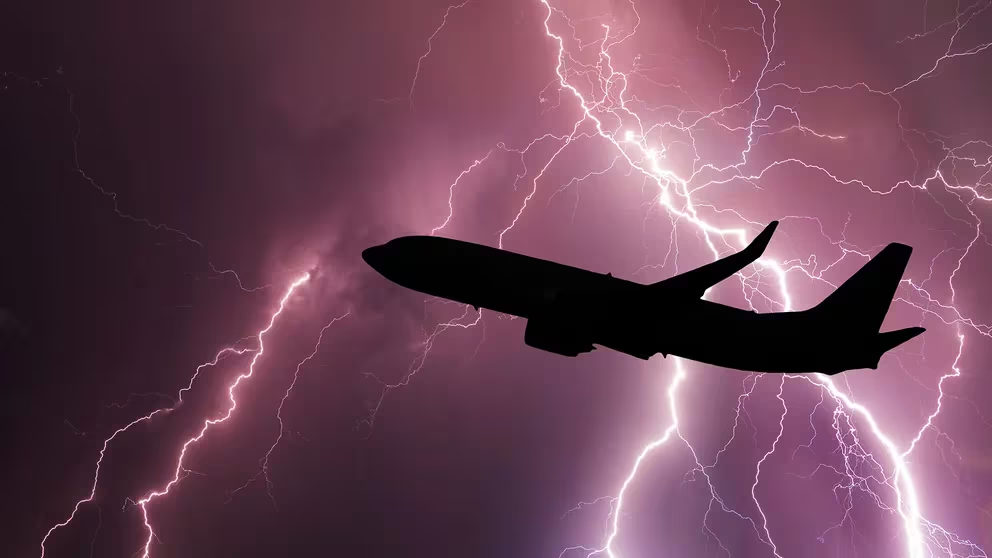A commercial pilot explains why these movements are common, and also gives recommendations on which seat to choose to suffer less during the trip. A practical and simple guide on some of the points most frequently asked by passengers.
Judging by the reactions of many airline passengers, one would assume so; turbulence is by far the top concern for anxious travelers. Intuitively, this makes sense.
Everyone who gets on a plane feels uncomfortable on some level, and there’s no more poignant reminder of the innate precariousness of flying than a good thump at 37,000 feet. It’s easy to imagine the plane as a helpless boat in a stormy sea. Occasionally, ships swamp, capsize, or crash into reefs due to rough seas, so the same must be true of planes — so much of it seems dangerous.
Except, in all but the rarest of circumstances, it isn’t. For all intents and purposes, an airplane cannot be flipped over, nosedived, or otherwise thrown out of the sky, even by the most powerful gust or air pocket.
The conditions may be annoying and uncomfortable, but the plane isn’t going to crash. Turbulence is an aggravating nuisance for everyone, including the crew, but also, for lack of a better term, normal . From a pilot’s perspective, it’s typically viewed as a convenience issue, not a safety issue.
The truth is that, although it may seem like the end of the world to many people, turbulence does not usually pose any danger to the plane and its passengers. Aircraft are designed to cope with the most severe movements . Here is a list of tips to deal with turbulence in the best way.
1 – Choosing the right seat
While it doesn’t make much difference, the most comfortable place to sit is on the wings, closest to the plane’s centers of lift and gravity. The most painful point is usually at the aft end (the back of the plane). In the rearmost rows, closer to the tail, the buffeting and rolling are most pronounced.
The ideal way to avoid feeling turbulence is to avoid sitting in the back seats of the plane. Those in the centre of gravity of the plane and on the wings are less affected by these disturbances, whereas those in the tail of the plane are the ones that feel them the most . It should also be noted that the larger the plane and the seat, the less we will feel the turbulence.
2 – Put on your seatbelt when instructed by the flight attendants
As soon as sudden movements begin, the crew will inform passengers what type of turbulence it is and will proceed to turn on the lights indicating that they must fasten their seatbelts.
As many travelers already know, flight crews in the United States tend to be more skittish about the seat belt sign than those in other countries. We keep the sign on longer after takeoff, even when the air is smooth, and will turn it on again with the slightest jolt or bubbling.
In some ways, this is another example of American overprotection, but there are legitimate liability concerns. The last thing a captain wants is the FAA breathing down his neck for not having the sign up when someone breaks an ankle and sues. Unfortunately, there is a crying wolf aspect to this; people get so used to the sign going off and on, seemingly for no reason, that they ignore it altogether.
3- Get informed about turbulence
It is important to have a thorough understanding of turbulence to avoid unfounded fears and anxieties. These phenomena fall into three main categories. Mild turbulence : unsecured objects on board move slightly. Food services may be served with some difficulty, but without problems. Moderate turbulence : unsecured objects are moved from their place. Walking down the centre aisle and reaching the toilet may be difficult. Significant changes in altitude and flight attitude. Severe turbulence : causes strong tensions on seat belts and sudden movements can cause nausea. Unsecured objects can fall at high speed and cause injuries.
4- Choose the location near the window
In addition to opting for seats over the wings, another option is to choose those by the window . In many cases, being able to see what is happening outside and verify that it is not a severe weather phenomenon can make passengers feel safer.
Remember, if you feel safer in this position, it is important to choose the seat you are going to sit in well. Another important point may be if you are afraid of flying , in which case I recommend that you avoid emergency exits, since when faced with a difficult and extreme situation, anxiety can lead you to end up interrupting a possible evacuation.
5- Keep small items stored away
Unsecured objects can fly into the air during turbulence and the sudden movements of the aircraft that can result from it . In addition, when this situation occurs, people may experience dizziness, which is why it is mandatory to wear a seatbelt when entering a section of turbulence to avoid bumps, falls and dizziness.
Also, remember that it is important to store personal items so that they do not fly around if the aircraft moves too suddenly.





















